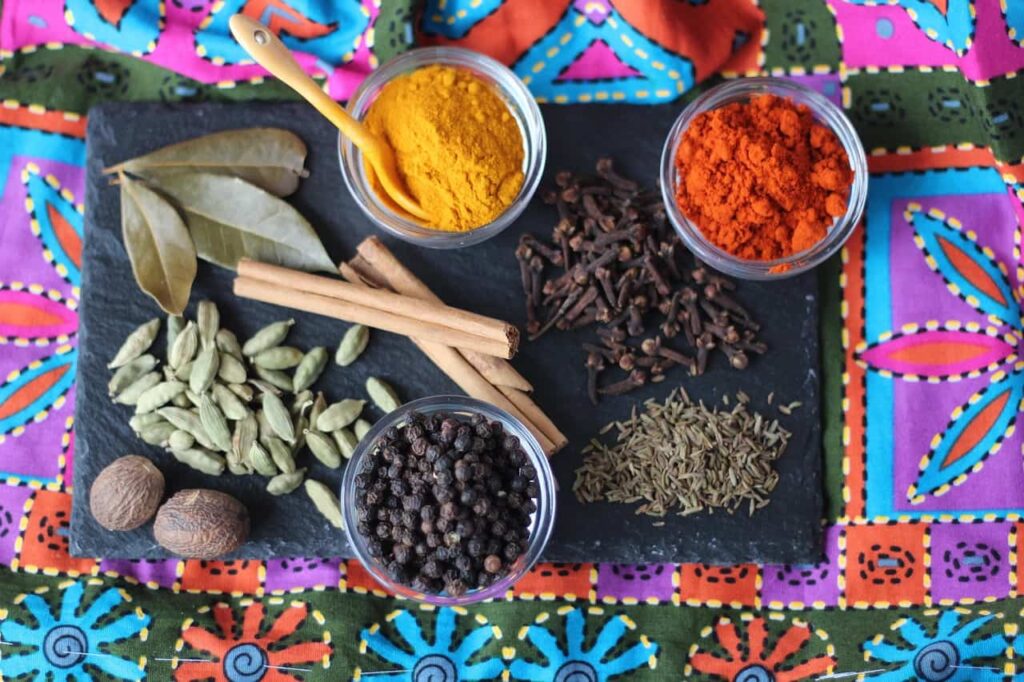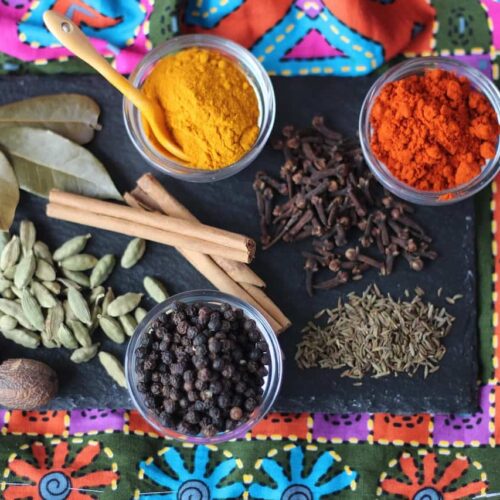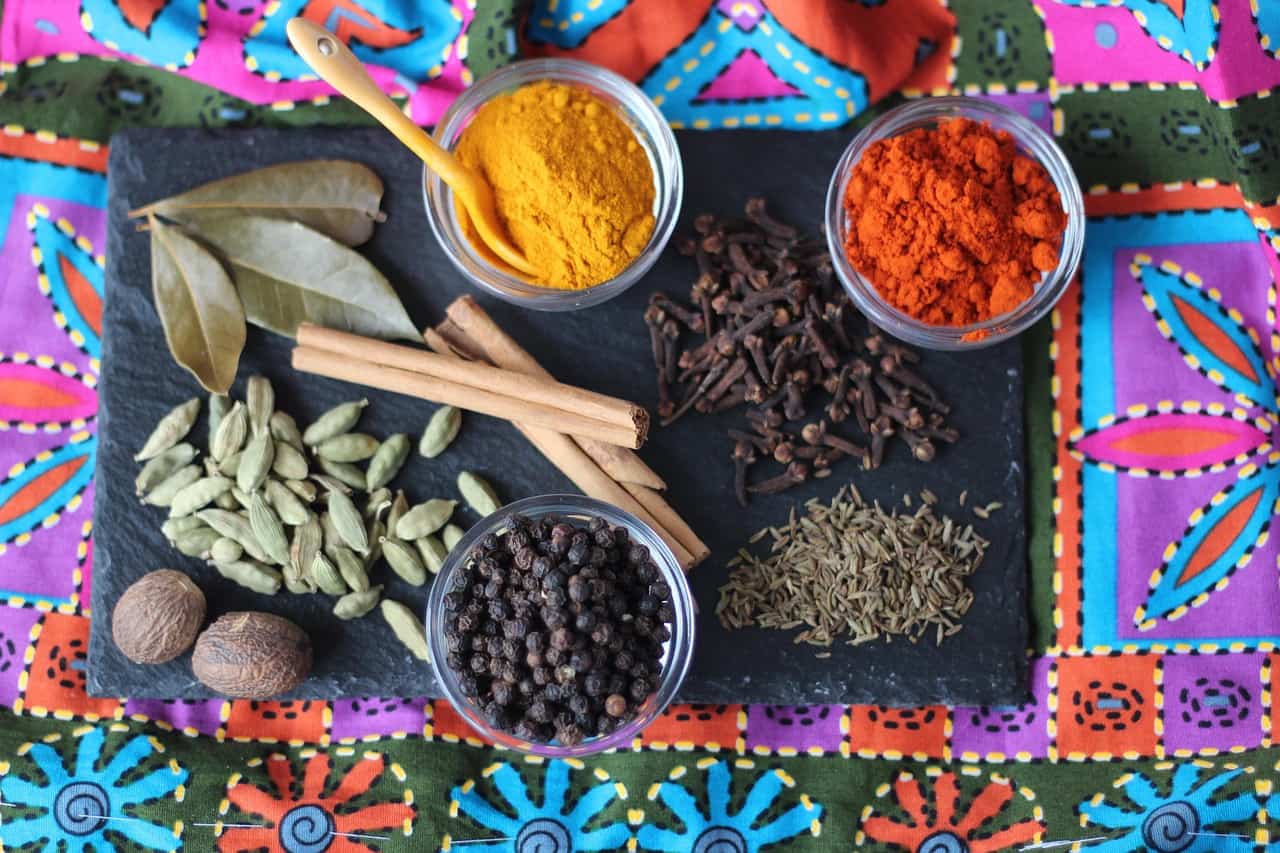Discover the rich flavors of masala—a traditional spice blend or paste used in Indian cooking. Learn its ingredients, health benefits, types, and tips for making it at home.

Ratings 05

What Is The Masala
In South Asian cooking, especially in Indian, Pakistani, and Sri Lankan gastronomy, masala that’s also a spice blend commonly used to enhance the taste, aroma, and color of nutrition. In Hindi and other related languages, “masala” could be defined as “spice” or “spice mix.”
01. Types Of Masala
Masala can be:
- Dry – a powdered mix of ground spices (e.g., garam masala, chaat masala)
- Wet – a paste made by blending spices with onions, garlic, ginger, tomatoes, or yogurt (used as a curry base)
02. Common Spices In Masala
- Cumin
- Coriander
- Turmeric
- Chili powder
- Garam masala
- Mustard seeds
- Fennel
- Cloves
- Cardamom
- Cinnamon
03. Uses Of Masala
Masalas are used in:
- Curries
- Marinades
- Snacks and street food
- Rice dishes (like biryani or pulao)
- Grilled or fried foods
Health Benefits Of Masala
Masala, when made from natural whole or ground spices, can offer several health benefits thanks to the powerful properties of the individual spices used. Here’s how masala contributes to well-being:
01. Boosts Digestion
- Cumin, fennel, and ginger in masala stimulate digestive enzymes.
- Helps reduce bloating, gas, and indigestion.
02. Anti-Inflammatory Properties
- Turmeric contains curcumin, a strong anti-inflammatory compound.
- Reduces inflammation and may relieve joint pain.
03. Rich In Antioxidants
- Coriander, cloves, cinnamon, and cardamom are high in antioxidants.
- Protects cells from damage and supports overall health.
04. Boosts Immunity
- Garlic, ginger, and black pepper enhance immune function.
- Helps fight off infections, especially during cold and flu season.
05. Improves Heart Health
- Spices like cardamom and cinnamon may help lower blood pressure and cholesterol levels.
- Chili peppers can improve blood circulation.
06. Aids In Weight Management
- Spices like black pepper and chili powder can boost metabolism.
- Promotes fat burning and appetite control.
07. Supports Brain Function
- Turmeric and cardamom may support memory and cognitive health.
- Some spices can reduce oxidative stress in the brain.
08. Note:
While masala is healthy in moderate amounts, excessive consumption or using too much oil/ghee in preparation can offset these benefits.
Other Names That Can Be Used For A Masala
“Masala” is a general term for spice blends or spiced mixtures. Depending on the type, use, or regional variation, masala may go by different names:
01. Common Synonyms & Related Terms
- Spice Mix
- Spice Blend
- Curry Powder (Western term, not traditionally Indian)
- Curry Masala
- Masala Paste
- Seasoning Blend
02. Regional & Specific Types Of Masala
- Garam Masala – Aromatic warm spice blend, often added at the end of cooking.
- Tikka Masala – Used for marinating meat (e.g., chicken tikka masala).
- Chaat Masala – Tangy, salty spice mix for snacks and salads.
- Pav Bhaji Masala – Special blend for Mumbai-style pav bhaji.
- Biryani Masala – For flavored rice dishes.
- Sabzi Masala – For vegetable dishes.
- For spiced Indian tea, utilize tea masala (as well recognized as chai masala).
- Meat Masala / Chicken Masala / Fish Masala – Customized blends for different proteins.
03. In Other Languages/Cultures
- Vadagam / Vadavam – South Indian fermented spice mix.
- Berbere – Ethiopian spice mix (similar use).
- Ras el Hanout – Moroccan spice blend.
- Five Spice Powder – Chinese equivalent.
Tips For Making Masala
Your food will taste much better if you make your own masala (spice paste or mix). This same bring tremendous guidance will help users do this flawlessly:
01. Dry Roast Whole Spices First
Roasting whole spices like cumin, coriander, cloves, and cardamom in a dry pan enhances their aroma and flavor before grinding.
02. Use Fresh Ingredients
Use fresh tomatoes, ginger, garlic, and onions to start making masala paste. This same flavor seems to be deeper as well as richer once made with fresh ingredients.
03. Balance The Flavors
A good masala includes:
- Warm spices (like cinnamon, cloves)
- Earthy spices (like cumin, coriander)
- Heat (like chili powder or black pepper)
- Aromatic (like cardamom, nutmeg)
- Avoid overusing any single spice—aim for harmony.
04. Cook The Masala Thoroughly
When making a paste, sauté the mixture until the oil starts to separate. This removes raw flavors and intensifies the taste.
05. Store It Right
- Dry masalas: Store in airtight containers away from heat and light. Use within 3–6 months.
- Small quantities of masala paste could be kept in the fridge for extended use or for up to One week.
06. Grind In Small Batches
If making dry masala, grind spices in small batches to preserve freshness and aroma.
07. Add Acidity Or Sweetness If Needed
A touch of tomato, yogurt, lemon juice, or sugar can balance overly bitter or spicy masala.
08. Test And Adjust
And then use your masala in a dish, always taste it. As required, adjust this same acidity, salt, or spice.
FAQ Masala
Here are some frequently asked questions about masala, covering preparation, storage, and usage:
01. What Distinguishes Wet Masala From Dry Masala?
- A powder or combination of ground spices, including such garam masala, is called “ masala.
- Usually used as a curry base, wet masala is a paste made with spices and extra ingredients like tomatoes, onions, garlic, and ginger.
02. Can I Make Masala At Home?
Yes! You can roast and grind whole spices to make dry masala, or sauté onions, garlic, and tomatoes with spices to create a wet masala paste.
03. How Long Can I Store Homemade Masala?
- Dry masala: 3–6 months in an airtight container in a cool, dark place.
- Wet masala paste: Up to 1 week in the fridge or 2–3 months in the freezer (in ice cube trays or small containers).
04. Can I Customize Masala To My Taste?
Absolutely! You can adjust the amount of heat, aroma, or tanginess by changing the quantity or type of spices.
05. Is Masala The Same As Curry Powder?
Not exactly. Curry powder is a Western invention inspired by Indian spice blends. Traditional masalas are more authentic and vary by region and dish.
06. Why Does My Masala Taste Bitter?
Bitterness can result from burning garlic or onions, over-roasting spices, or using too much clove or fenugreek. To balance it, add a tiny bit of acidity or sweetness (such as lemon or tomatoes).
07. Do I Using Every Spice Which A Recipe That Calls For?
No. You can omit or substitute certain spices based on availability or taste—just try to maintain a balance of flavors.
08. Can I Use Masala In Non-Indian Dishes?
Yes! Masala adds bold flavor to soups, grilled vegetables, roasted meats, and even fusion dishes like spiced pasta or stir-fry.

Masala
Ingredients
- 2 tablespoons oil (vegetable or ghee)
- 1 large onion (finely chopped)
- 1 tablespoon ginger-garlic paste
- 2 tomatoes (finely chopped or pureed)
- 1 teaspoon cumin seeds
- 1 teaspoon coriander powder
- 1 teaspoon garam masala
- 1 teaspoon turmeric powder
- 1 teaspoon red chili powder (adjust to taste)
- Salt (to taste)
- Fresh cilantro leaves (for garnish, optional)
Instructions
- Heat oil in a pan over medium heat.
- Add cumin seeds and let them splutter for a few seconds.
- Add chopped onions and sauté until golden brown.
- Stir in the ginger-garlic paste and cook until the raw smell disappears (1-2 minutes).
- Add chopped tomatoes and cook until they become soft and the oil starts to separate.
- Mix in the spices – coriander powder, turmeric, chili powder, garam masala, and salt. Stir well and cook for 2-3 minutes.
- Cook until the masala thickens and becomes a paste-like consistency.
- Use immediately in your favorite curry or store in an airtight container in the fridge for up to a week.
-
Masala
Discover the rich flavors of masala—a traditional spice blend or paste used in Indian cooking. Learn its ingredients, health benefits, types, and tips for making it at home. Ratings 05 What Is The Masala In South Asian cooking, especially in Indian, Pakistani, and Sri Lankan gastronomy, masala that’s also a spice blend commonly used to…


Leave a Comment